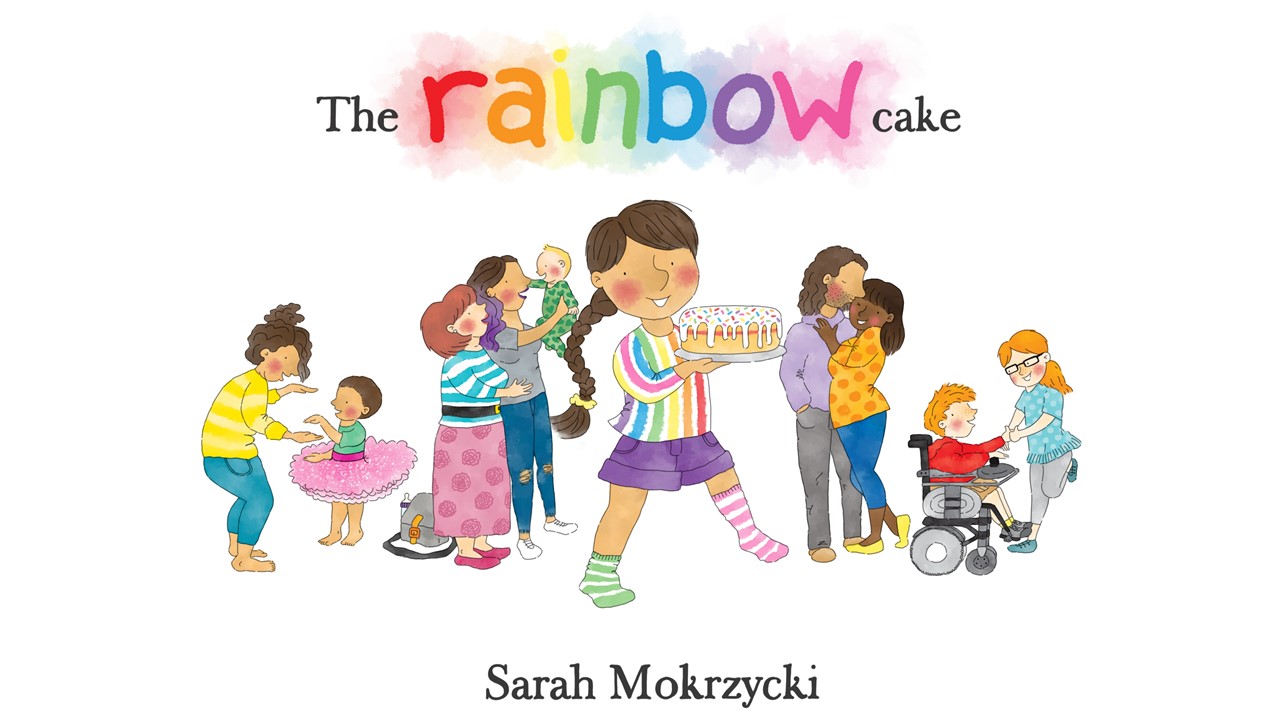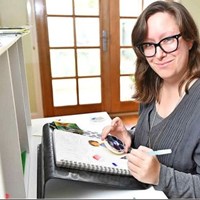Issue 119
Term 4 2021
The need for family-diverse picture books
Sarah Mokrzycki shows just how much representation matters.
Did you grow up in a ‘picture perfect’ family? Let’s see. Were you raised by both biological parents? Was your house a white, middle-class home? Was it also heteronormative and highly gendered? Were there no half- or step-siblings? And did you grow up as a stereotypical (and most likely blonde) little boy?
Representation in books should be a right, not a privilege.
If that wasn’t quite your experience, don’t worry. It wasn’t mine, either. Nor is it the experience of over a million Australians. Yet it is this ideal of the ‘picture perfect’ family that dominates Australia’s picture books.
Families with a traditional, nuclear structure are labelled ‘intact’ by the Australian Government (Australian Institute of Family Studies). The Oxford Dictionary defines ‘intact’ as complete and undamaged (Oxford Learner’s Dictionary, 2021).
What does that say about all the other types of families? The 142,000 step- and blended families – like the one I was raised in? The 46,000 foster families – like the one I’m in now? The 900,000 single-parent families? What does it say to the 1.2 million Australian children who don’t live with both biological parents?
As Brendan Churchill explains in The Conversation (8 Jan 2018), ‘[T]he Australian family is as diverse and different as the country’s terrain’. And yet diverse families are rarely acknowledged in our picture books. Where are the First Nations protagonists? The single dads? The same sex parents? The wheelchair users? The neurodiverse?
Their stories do exist but they are rare and hard to find, and almost always published internationally, highlighting a major gap in Australian children’s publishing. This issue was highlighted in a Deakin University survey about LGBTQI+ picture books:
"It’s hard to find books featuring LGBTQI+ families online unless you already know the titles, and the ones that do exist mostly come from North America … there’s a very narrow range of representations of the diversity of rainbow families, and the books that do exist are often not easily located because there’s no consistency in how they are categorised … or referred to online." - Deakin University. (24 June 2020)

This issue extends to all forms of family diversity. As there is no consistency in how books are categorised, titles can be easy to miss. To combat this issue, I created a list of 100 family-diverse picture books for my recent PhD. The list includes the types of diversity the books cover (under the umbrellas of Structure, Culture, Identity and Body). It also includes the method in which diversity is presented (Issue-driven, Combination [showing diversity in both text and illustration] or Illustration only). The aim of this list is to help families and schools easily find family-diverse titles for their homes and classrooms.
Research shows that when children can’t see themselves in books, their sense of self-worth, their ability to form healthy friendships and their reading and educational development can all be obstructed. Relating to book characters is a vital tool that engages young children with literature. It connects them to the world, validates their personal experiences and helps forge a lifelong love of reading.
There are many instances where lack of representation has caused our foster children to feel lonely and ashamed. One such instance happened over Mother’s Day a few years back.
Our foster son, who my husband and I co-parent with his biological father, lives with us on weekends and school holidays. As such, he isn’t with me, his ‘non-bio mum’ (as he calls me), through the week. When Mother’s Day was drawing near, he asked us for craft supplies: wood, cardboard, glue. When we asked him what he was making, he replied simply, ‘A mum’.
After a bit of discussion we found out that children in his class – where the past few days had been spent making Mother’s Day gifts and reading Mother’s Day books – had started asking him incessantly about his biological mother. Where is she? Why doesn’t she live with you? Why don’t you see her? In desperation, our son tried to make himself a mother to keep with him through the week.
Children are naturally curious, and it is natural for them to ask questions when presented with a lifestyle different from their own. However, this can inadvertently make the object of their questions feel scrutinised and uncomfortable. For this reason, it is vital that children are presented with diverse books in the classroom. As noted by researcher Skrlac Lo, family-diverse books in the classroom can help children from diverse families feel accepted, but also help all children understand that there are many different – and equally valid – ways to make a family.
Put simply: representation matters. The World of Difference Institute says that ‘when children are represented in books, they can see themselves as valuable and worthy of notice’. It is vital for all children to feel this way. Representation in books should be a right, not a privilege. And, most importantly, all families – whatever shape they take – are intact.
References
Churchill, Brendan. (8 January 2018). Mum, dad and two
kids no longer the norm in the changing Australian family.
The Conversation. https://theconversation.com/mum-dad-and-two-kids-no-longer-the-norm-in-the-changing-australian-family-88014
Deakin University. (24 June 2020). Research shows lack
of diverse representation in LGBTQI+ kids’ lit [Media release] https://www.deakin.edu.au/about-deakin/news-and-media-releases/articles/research-shows-lack-of-diverse-representation-in-lgbtqi-kids-lit
Australian Institute of Family Studies. (2021). Family Facts and Figures Glossary https://aifs.gov.au/family-facts-and-figures-glossary
Recommended resources
Lindsey White, “Impact of Children's Literature on Family Structures and Children's Perceptions of Family”
https://fisherpub.sjfc.edu/education_ETD_masters/320/
Dr Rudine Sims Bishop, “Mirrors, Windows, and Sliding Glass Doors”
https://www.courthousenews.com/wp-content/uploads/2020/07/rif-doors.pdf
Child’s Play publisher’s catalogue: lists ‘inclusions’ (e.g. children with hearing aids, eye patches, wheelchairs) underneath book descriptions.
https://www.childsplay.com.au/Childs_Play_2019_Catalogue.pdf
National Centre for Australian Children’s Literature (NCACL) Aboriginal and or Torres Strait Islander Resource
https://www.ncacl.org.au/resources/databases/welcome-to-the-aboriginal-and-or-torres-strait-islander-resource/
National Centre for Australian Children’s Literature (NCACL) bibliography of family-diverse titles
https://www.ncacl.org.au/wp-content/uploads/2020/02/Family-Diversity-in-Australian-Childrens-Picture-Books.pdf
Grace Lin, “The Windows and Mirrors of Your Child's Bookshelf” (TEDx talk)
https://www.youtube.com/watch?v=_wQ8wiV3FVo
Brynn Welch, “Missing Adventures: Diversity and Children's Literature” (TEDx talk)
https://www.youtube.com/watch?v=Yq2opVinciA&t=617s
Chimamanda Ngozi Adichie, “The danger of a single story” (TEDx talk)
https://www.youtube.com/watch?v=D9Ihs241zeg
Brendan Churchill, “Mum, dad and two kids no longer the norm in the changing Australian family”
https://theconversation.com/mum-dad-and-two-kids-no-longer-the-norm-in-the-changing-australian-family-88014
Deakin University, “Research shows lack of diverse representation in LGBTQI+ kids' lit”
https://www.deakin.edu.au/about-deakin/news-and-media-releases/articles/research-shows-lack-of-diverse-representation-in-lgbtqi-kids-lit
